
Trails in the night sky left by BlueWalker 3 over the Observatorio Astronomico Nacional, San Pedro Martir, Mexico, observed on November 12, 2022. The breaks in the trail are caused by breaks between the exposures that were stacked to create this image. Credit: I. Plauchu-Frayn
New Nature paper contains the results of international observing campaign conducted over 130 days.
Scientists, including astronomers from the International Astronomical Union Centre for the Protection of the Dark and Quiet Sky from Satellite Constellation Interference (IAU CPS), have published a paper in Nature assessing the detailed impact of the BlueWalker 3 satellite on astronomy. Building on initial observations from shortly after its launch, these new results complement the initial understanding of this unusual satellite and the paper contains details of how the satellite’s brightness changes over time and the visibility of jettisoned hardware. With companies intending to deploy more commercial satellites in the coming years, this paper highlights the need for pre-launch impact assessments.
“The interference of satellites in astronomy has become an increasingly pressing issue over the last few years,” commented first author Sangeetha Nandakumar from the Instituto de Astronomía y Ciencias Planetarias, Universidad de Atacama Chile.
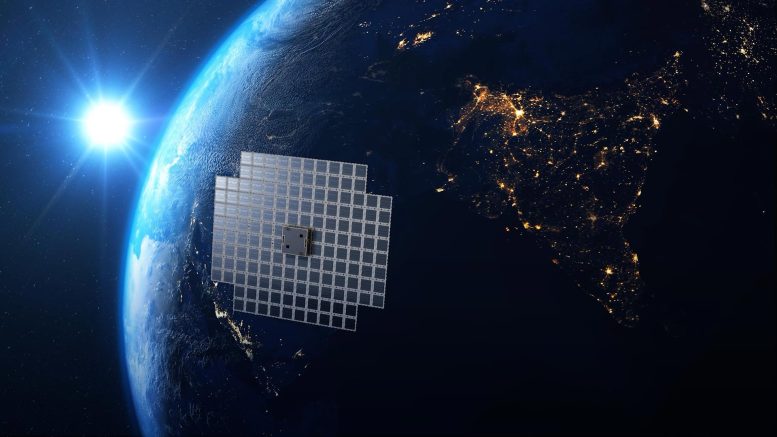
A recent study on the BlueWalker 3 satellite’s impact on astronomy underscores concerns about brightness and radio interference, prompting calls for pre-launch assessments and protective measures as commercial satellite deployments increase. Credit: AST SpaceMobile
Initial Observations and Findings
BlueWalker 3 was launched into low Earth orbit on September 10, 2022, by AST SpaceMobile as a prototype for a planned constellation of over a hundred similar satellites intended for use in mobile communications. Observations made shortly after launch showed that the satellite was among the brightest objects in the sky. However, to better understand its impact on astronomy, the CPS, which is co-hosted by NSF’s NOIRLab and the SKAO, initiated an international observing campaign. As part of this initiative, both professional and amateur observations were contributed from across the world from sites in Chile, the US, Mexico, Aotearoa New Zealand, the Netherlands, and Morocco.
The newly released data show an abrupt increase in the brightness of BlueWalker 3 over a period of 130 days, coinciding with the complete unfolding of the antenna array and followed by fluctuations over the subsequent weeks.[1] The paper also reveals a relationship between the varying brightness and other factors after unfolding, such as the satellite’s height above the horizon and the angle between the observer, the satellite, and the Sun. A subset of the observations were also used to calculate the satellite’s trajectory over time. Comparing the predicted path with the observations collected, the authors were able to evaluate the accuracy of these predictions and observe how it declines over time as a result of factors such as atmospheric drag.
The BlueWalker 3 satellite captured on April 3, 2023. The optical brightness of the 8 meter x 8 meter satellite — one of the brightest objects in the night sky having reached a peak brightness of magnitude 0.4 — is exhibited here as it travels across the starry backdrop. For comparison, two fainter satellites can also be seen in the footage; Starlink-4781 (in front of BlueWalker) and Starlink-4016 (paralell and slightly behind BlueWalker in a few frames). Credit: Delft Technical University/M. Langbroek
Satellite Components and Ground-based Challenges
Additionally, the launch vehicle adapter attached to BlueWalker 3 was observed decoupling from the satellite. This component reached magnitude 5.5, exceeding maximum brightness recommendations set out by the International Astronomical Union to avoid the worst impacts of satellites on optical astronomy. It also went unrecorded in public catalogs for four days. Since items of hardware like this are often left to drift for extended periods, incomplete data on their orbits present further challenges for ground-based observatories trying to avoid them.
“These results demonstrate a continuing trend towards larger, brighter commercial satellites, which is of particular concern given the plans to launch many more in the coming years,” says the study’s co-author Siegfried Eggl from the CPS and the Department of Aerospace Engineering at the University of Illinois at Urbana-Champaign (UIUC). “While these satellites can play a role in improving communications, it is imperative that their disruptions of scientific observations are minimized. This could preferably be achieved through continuing cooperation on mitigation efforts, or, if that is not successful, through a requirement for pre-launch impact assessments as part of future launching authorization processes.”
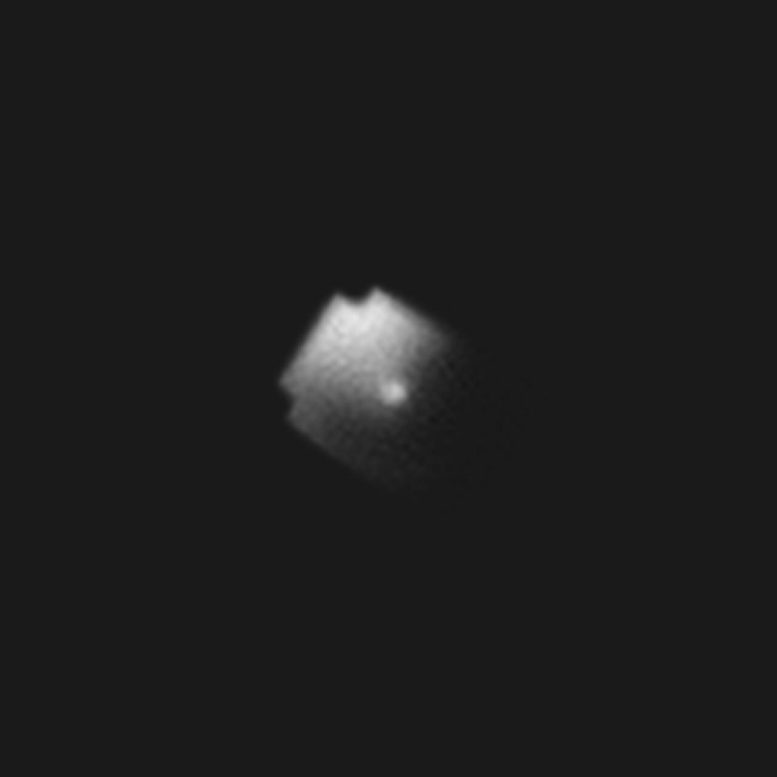
An image of the 8 meter x 8 meter BlueWalker 3 satellite as seen from the ground. Credit: M. Tzukran
Considering Radio Frequency Interference
“Besides the effect on visible observations, BlueWalker 3 could also interfere with radio astronomy, since it transmits in radio frequencies close to those that radio telescopes observe in,” says Federico Di Vruno, co-director of the IAU CPS. “The novel aspect of BlueWalker 3 is that it uses frequencies that are normally used by terrestrial transmitters,” he adds. While some telescopes are located within designated radio-quiet zones, the restrictions in place to preserve these areas currently apply only to terrestrial transmitters, so they are not necessarily protected from satellite transmission. Further research is therefore required to develop strategies for protecting existing and future telescopes from the numerous satellites planned for launch over the next decade.
Balancing Progress with Preservation
“The astronomical community understands the need for greater connectivity and improvements to Internet access, particularly for rural and underserved communities. However, that progress has to be balanced against the negative impact that bright satellites can have on the night sky. This is a global issue, since satellites approved by any country are visible in the night sky across the world, highlighting the importance of international coordination,” says the study’s co-author Jeremy Tregloan-Reed from the Instituto de Astronomía y Ciencias Planetarias, Universidad de Atacama Chile, CLEOsat and the CPS.
Observations of BlueWalker 3 will continue, with plans by astronomers to observe its thermal emission later this year. Astronomers will continue to discuss this topic at the upcoming IAU Symposium: Astronomy and Satellite Constellations: Pathways Forward in October.
For more on this research, see Massive Satellite Outshines All but the Brightest Stars.
Notes
- The data show the changing brightness over the course of 130 days, from an apparent magnitude of 6 (prior to unfolding) to an apparent magnitude of 0.4.
Reference: “The high optical brightness of the BlueWalker 3 satellite” by Sangeetha Nandakumar, Siegfried Eggl, Jeremy Tregloan-Reed, Christian Adam, Jasmine Anderson-Baldwin, Michele T. Bannister, Adam Battle, Zouhair Benkhaldoun, Tanner Campbell, J. P. Colque, Guillermo Damke, Ilse Plauchu Frayn, Mourad Ghachoui, Pedro F. Guillen, Aziz Ettahar Kaeouach, Harrison R. Krantz, Marco Langbroek, Nicholas Rattenbury, Vishnu Reddy, Ryan Ridden-Harper, Brad Young, Eduardo Unda-Sanzana, Alan M. Watson, Constance E. Walker, John C. Barentine, Piero Benvenuti, Federico Di Vruno, Mike W. Peel, Meredith L. Rawls, Cees Bassa, Catalina Flores-Quintana, Pablo García, Sam Kim, Penélope Longa-Peña, Edgar Ortiz, Ángel Otarola, María Romero-Colmenares, Pedro Sanhueza, Giorgio Siringo and Mario Soto, 2 October 2023, Nature.
DOI: 10.1038/s41586-023-06672-7


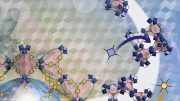


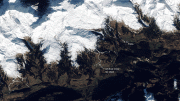
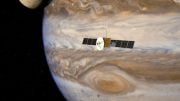
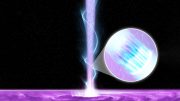

Be the first to comment on "Drowning Stars: BlueWalker 3’s Unprecedented Impact on Night Sky Observations"